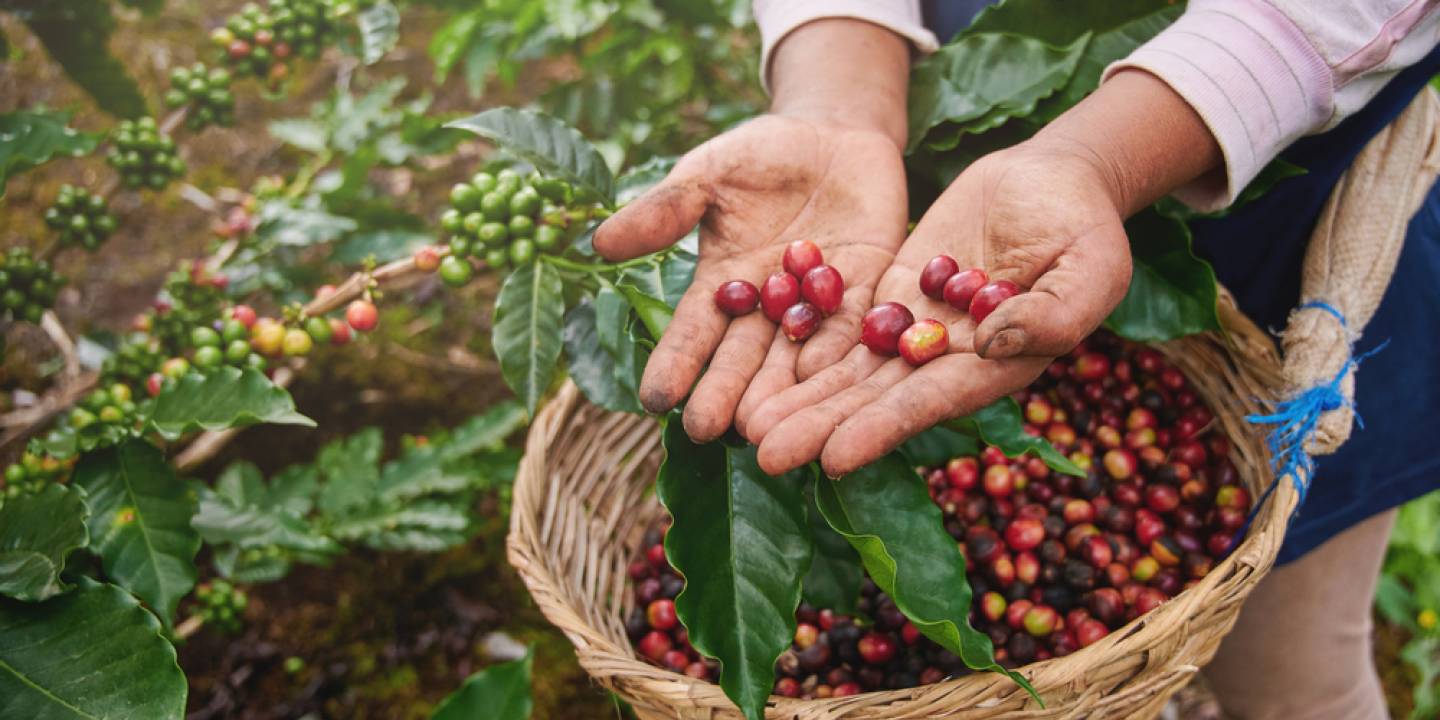A Starter’s Guide to Understanding SOE Single Origin Espresso
A Starter’s Guide to Understanding SOE Single Origin Espresso
Blog Article
Exploring the Rich Tastes of Coffee Beans: a Deep Dive Into Espresso and Blended Coffee Beans
You uncover a complex globe where each selection brings its own personality to your mug when you discover the rich flavors of coffee beans. Comprehending the beginnings, refining approaches, and roasting strategies can change your coffee experience. As you navigate through the art of espresso and the creativity behind mixed coffees, you'll start to value the subtleties that make each sip unique. What you'll discover following might change the means you enjoy your early morning mixture.
The Origins of Coffee Beans: Discovering Terroir and Flavor Profiles
When you take a sip of coffee, you're not just delighting in a drink; you're experiencing a rich tapestry of flavors shaped by the beans' origins. Each region generates distinct taste accounts affected by environment, altitude, and soil. Beans from Ethiopia usually rupture with bright, fruity notes, while those from Colombia tend to offer a well balanced, nutty sweetness.As you check out different origins, you'll notice exactly how terroir-- the environmental elements influencing a plant-- plays an important duty. The very same coffee selection can taste considerably different depending on where it's grown.When you consider these factors, you begin to appreciate the complexity behind your mug. Each sip informs a tale of the land and the farmers who nurtured the beans. So, next time you delight, think concerning the trip your coffee took prior to it reached your hands, and savor those complex tastes that show its beginning.
Comprehending Coffee: The Art and Science Behind the Mixture
It's not simply about the solid taste; it's likewise concerning the strategies that bring it to life when you think about espresso. Comprehending how various prep work techniques impact taste can change your brewing experience. Let's explore the details of espresso preparation and discover the distinct flavor profiles that make each mug special.
Coffee Preparation Techniques
Coffee preparation is both a scientific research and an art, incorporating accurate techniques with a deep understanding of coffee. To begin, you'll wish to select top notch, newly baked beans and grind them carefully for ideal extraction. The grind dimension is important; too rugged, and your espresso will certainly be weak, as well great, and it'll be bitter.Next, tamp the premises evenly in the portafilter to guarantee uniform extraction. When you secure it right into the equipment, go for a brewing temperature between 190 ° F and 205 ° F.As you pull the shot, look for the ideal extraction time-- around 25-30 seconds. The outcome should be a rich, creamy espresso with a gorgeous layer of crema on top - SOE. With method, you'll understand these strategies
Flavor Profiles Discussed
The globe of espresso provides a rich tapestry of taste profiles that can elevate your coffee experience. When you take that very first sip, you'll observe an equilibrium of level of acidity, resentment, and sweet taste. Each coffee bean brings distinct notes, from flower and fruity to nutty and chocolaty. Light roasts usually showcase bright acidity and dynamic tastes, while dark roasts existing much deeper, bolder tones.Understanding these profiles helps you pick the best espresso for your palate. Trying out with different blends can reveal shocking combinations. A well-crafted blend may integrate the brilliant notes of an Ethiopian bean with the rich, chocolatey touches of a Brazilian bean. Embrace the journey of uncovering espresso's diverse flavors, and you'll change your coffee ritual into an amazing experience.
Handling Techniques: Exactly How They Influence Taste and Fragrance
While it might seem that the beginning of coffee beans is the most significant consider determining their flavor and aroma, the processing approaches made use of post-harvest play an equally important duty. You'll locate that these techniques can substantially change the last preference account of your cup.For circumstances, the washed process eliminates the fruit from the beans before fermentation, usually causing a cleaner, brighter flavor. The natural process leaves the fruit undamaged during drying out, resulting in a sweeter, fruitier profile.Other methods, like honey processing, strike an equilibrium, allowing some fruit mucilage to stay, giving a distinct complexity.Each processing technique connects with the beans' integral characteristics, boosting or muting particular tastes and aromas. So, when you drink that coffee or mixed coffee, keep in mind that the trip from cherry to mug is affected not just by beginning but additionally by how those beans were processed.

Roasting Methods: Unlocking the Full Prospective of Coffee Beans
Roasting techniques are vital for exposing the complete capacity of coffee beans, as they transform raw, eco-friendly beans right into the fragrant, savory coffee you appreciate. The option of roasting method-- light, medium, or dark-- considerably influences flavor profiles. Light roasts protect the beans' natural acidity and fruity notes, while tool roasts balance sweetness and richness. Dark roasts, on the other hand, emphasize strong, great smoky flavors.You can explore toasting temperature levels and times to discover important site your best brew. A slower roast at reduced temperature levels permits for complicated tastes to create, while a quicker roast can heighten resentment. Take notice of the splits during roasting; the first fracture suggests a light roast, while the second fracture signals a dark roast - SOE. By grasping these techniques, you'll expose a world of taste, boosting your coffee experience to new elevations. Enjoy every sip, knowing the treatment that entered into your mug!
The Magic of Blended Coffee: Producing Unique Taste Experiences
Creating a special flavor experience with blended coffee can change your morning ritual into an expedition of taste. By combining various beans from various regions, you can disclose a harmony of tastes that boost your cup to brand-new elevations. Each mix offers a distinctive account, balancing sweet taste, body, and level of acidity to develop something absolutely special.When you pick a mix, you're not simply choosing a coffee; you're selecting a journey across varied landscapes and cultures. Explore various combinations permits you to discover your personal faves, whether you appreciate fruity notes or rich, chocolatey undertones.Blended coffee additionally offers you the flexibility to readjust the brew to fit your mood. You could crave a light-bodied mix eventually and a strong, dark roast the next. Accept the magic of mixing and let each cup shock your taste, making every sip a wonderful journey.
Tasting Notes: Recognizing the Subtleties in Your Cup
As you drink your coffee, you could see a range of tastes dancing on your taste buds, each exposing the intricacies of the beans. You may taste the brilliant acidity reminiscent of citrus or the deep, abundant notes similar to dark delicious chocolate. The sweet taste could stimulate honey or caramel, balancing the total profile beautifully.Pay interest to the body of the coffee-- does it feel airy and light, or is it complete and creamy? The finish, as well, uses clues; a lingering aftertaste may mean nuttiness or floral undertones.Don' t neglect to discover the one-of-a-kind qualities of various origins, as each area imparts distinct tastes. Ethiopian coffees typically present fruity notes, while Colombian beans may display an extra rounded sweet taste. By acknowledging these subtleties, you'll deepen your recognition for every cup, raising your coffee experience to brand-new heights.

Developing Approaches: Optimizing Taste Extraction for Every Bean
You'll find that each method can substantially affect the flavor account of your coffee when you discover the various brewing methods. From French press to pour-over, each approach removes various compounds, improving or silencing particular notes. Making use of a French press allows oils to continue to be in the mixture, developing a richer taste, while pour-over emphasizes clarity and brightness.Temperature and grind size additionally play necessary roles. A coarser grind functions best for cold mixtures, while a great work is perfect for coffee. Exploring with water temperature level-- between 195 ° F and 205 ° F-- can expose concealed flavors, too.Don' t forget steeping time; a quick extraction can cause sour notes, while over-extraction might produce bitterness. By readjusting these variables, you can optimize taste extraction and genuinely elevate your coffee experience. Appreciate the trip of uncovering what approach best fits your taste!
Frequently Asked Inquiries
What Is the Perfect Water Temperature Level for Developing Coffee?
The perfect water temperature for brewing coffee's in between 195 ° F and 205 ° F. If you utilize water that's too hot, you'll over-extract tastes; also cool, and you will not extract enough. Go for that wonderful place for the best mixture!
How Does Grind Dimension Influence Coffee Flavor?
Grind size considerably influences coffee flavor. Better grinds extract more oils and flavors, causing a bolder preference, while coarser grinds return a lighter flavor. Changing work dimension aids you attain your desired coffee profile.
Exist Wellness Conveniences Linked With Alcohol Consumption Coffee?
Yes, consuming coffee can use health benefits. her explanation It may improve cognitive function, increase metabolic rate, and lower the risk of specific illness. Just remember to enjoy it in moderation to gain the benefits without damaging effects.

What Is the Difference In Between Arabica and Robusta Beans?
Arabica beans are smoother and address sweeter, frequently including fruity flavors, while robusta beans are more powerful with a bitter preference and greater high levels of caffeine content. You'll observe these differences in aroma and developing experience.
Just How Can I Shop Coffee Beans for Freshness?
To keep coffee beans for quality, keep them in a closed container, far from light, heat, and dampness. You'll preserve their taste much longer if you just grind what you require right prior to brewing. When you explore the abundant flavors of coffee beans, you uncover a complex globe where each range brings its very own personality to your mug. When you take a sip of coffee, you're not simply taking pleasure in a beverage; you're experiencing an abundant tapestry of flavors shaped by the beans' origins. While it could seem that the origin of coffee beans is the most significant aspect in determining their taste and aroma, the handling approaches utilized post-harvest play a just as vital role. Toasting methods are necessary for exposing the complete possibility of coffee beans, as they change raw, eco-friendly beans right into the fragrant, savory coffee you take pleasure in. As you sip your coffee, you could notice a spectrum of flavors dancing on your taste, each disclosing the complexities of the beans.
Report this page